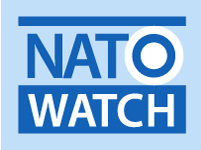Rethink Europe Discussion Papers
No.1 - August 2025
On the 1 August the Helsinki Final Act celebrated 50 years, and the anniversary was marked a day earlier by high-level speeches and panels in the Finnish capital. The agreement, signed by 35 nations including the Soviet Union and the United States back in 1975, was a high watermark of Cold War détente and paved the way for today’s Organization for Security and Cooperation in Europe (OSCE).
The Helsinki Final Act is a significant document in the history of Cold War diplomacy. It was not a military treaty, but a political agreement that fundamentally reshaped the strategic environment in which NATO and the Soviet Union/Russia operated. While it aimed to improve relations between East and West, its focus was broader, encompassing security, economic and humanitarian cooperation among a wider group of all European states (with the sole exception of Albania), the US and Canada. It was built around three ‘baskets’:
- Security (Frontier inviolability, non-aggression, military confidence-building measures);
- Economic Cooperation (Trade, energy, environmental collaboration); and
- Human Rights & Humanitarian Issues (Freedom of movement, human rights, cultural exchanges).
With the creation of the OSCE in the 1990s, the third human rights basket was expanded to include the protection of national minorities, press freedom and creation of the Office for Democratic Institutions and Human Rights (ODIHR), which still sets standards for election observation missions.
The Helsinki Final Act significantly shaped the evolution of NATO-Russia relations over the past half century in several ways. This discussion paper - the first in a new series on rethinking European security - discusses the 50-year legacy of the Act from both the NATO and Russian perspective, since these differences are at the heart of the current divisions between the two sides. It then asks how a new Helsinki process might be constructed to rebuild bridges between them.
Key Takeaways
- The Helsinki Final Act, signed in 1975 by 35 nations, including the Soviet Union and the US, marked a milestone in Cold War détente and laid the foundation for the OSCE..
- The Act comprised three main baskets:
- Security: Principles like territorial integrity, non-aggression, and confidence-building measures.
- Economic Cooperation: Trade, energy, and environmental collaboration.
- Human Rights & Humanitarian Issues: Freedom of movement, human rights protections, and cultural exchanges.
- From NATO’s perspective:
- Initially viewed with suspicion but became a strategic tool to undermine the Eastern Bloc internally through human rights provisions (Basket Three).
- Post-Cold War, it justified NATO’s expansion and interventions in the Balkans, emphasizing sovereign choice of alliances.
- Russia’s violations of the Act (e.g., Crimea annexation, Ukraine invasion) have reinforced NATO’s core mission of collective defence.
- From Russia’s perspective:
- Initially a diplomatic victory securing its sphere of influence and recognition of post-WWII borders.
- Post-Soviet Russia grew disillusioned, seeing NATO expansion as a betrayal of the Act’s spirit and a threat to its security.
- Under Putin, Russia views the Act as a Western tool to undermine its sovereignty and justifies its revisionist policies accordingly.
- A new Helsinki Final Act could aim to:
- Rebuild trust and reduce military confrontation risks.
- Reaffirm sovereignty, territorial integrity, and non-use of force.
- Address modern security challenges like cyber and hybrid warfare.
- Establish mechanisms for dialogue, transparency, and crisis management.
- Balance interests of all states, including smaller ones.
- Challenges for a new Act include:
- Need for unprecedented NATO-Russia cooperation.
- Crafting a balanced human rights dialogue avoiding Western imposition.
- Designing effective decision-making mechanisms combining consensus and majority voting, with institutionalized dialogue to reconcile differing views on ‘security indivisibility’.
- Track 1.5 dialogues and working groups could build confidence through practical agreements on deployments, cyber norms and regional flashpoints.
- The Annex proposes four baskets for a new Act: modernized security with arms control and crisis management; economic interdependence and resilience; a renewed human dimension emphasizing shared values and civil society; and regional governance reform including OSCE transformation and new multilateral frameworks for security cooperation:
- Additionally, reconsideration of NATO’s role may be necessary, given its expansion post-Cold War and the sidelining of the OSCE. A new European security architecture may require a more balanced, multipolar approach to military security cooperation.
- The overall goal is to create a more stable, cooperative European security order and avoid continued confrontation. This will require genuine political will and compromise.
Read more in the attached pdf.
| Attachment | Size |
|---|---|
| helsinki_at_50.pdf | 510.32 KB |
